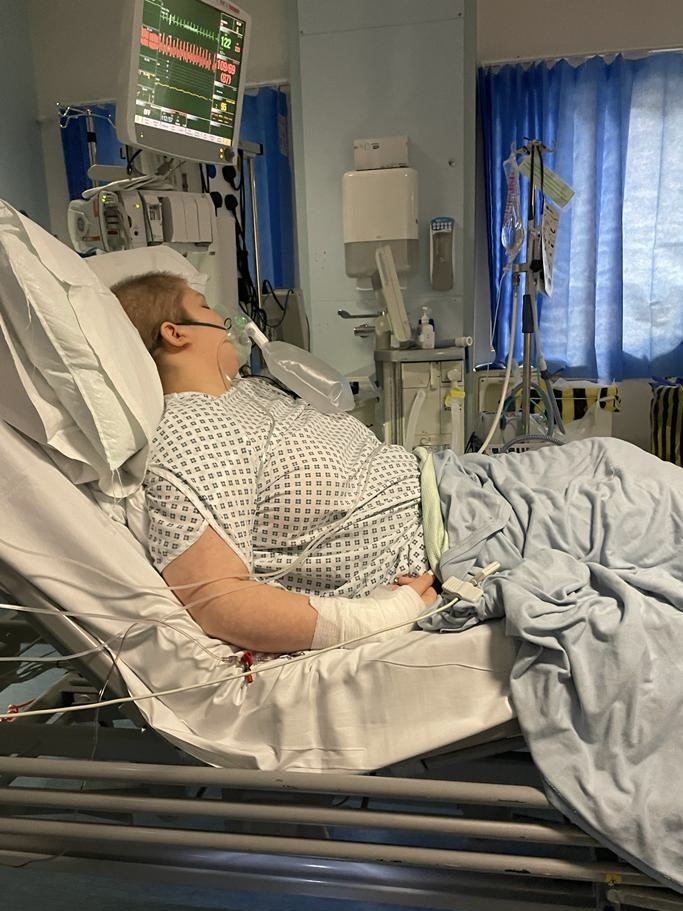Tests during cancer treatment
Find out about tests you might have during cancer treatment, what they’re for and how they’re done.
You are viewing: About the tests you might have
- You might have lots of different tests during cancer treatment
- Knowing what they’re for can help you feel more at ease
- Everyone’s treatment is different but there are some tests you’re likely to have
- If you’re ever not sure, you can ask someone in your clinical team
- You might also have an IV line put in, to make giving you certain drugs easier
Tests can become a regular part of your life when you have cancer, and knowing what to expect can ease any worries you might have. Your medical team will always be happy to answer questions, but here are the basics about some of the most common tests.
What tests might I have during cancer treatment?
Audiogram
Some chemotherapy drugs can affect your hearing, so you might have audiogram tests – which don’t hurt – to check for any changes.
Biopsy
A biopsy involves a small tissue sample being taken from your body so it can be studied for signs of cancer. You’re given pain relief or an anaesthetic beforehand.
Blood test
Blood tests are used to monitor the red blood cells, white blood cells and platelets in your blood. Blood can be taken using a needle or special tubes called lines and ports.
Bone marrow biopsy
This involves taking a small sample of your bone marrow – the spongy tissue found in larger bones – to test for signs of cancer. You’re given pain relief or an anaesthetic beforehand, and then a small amount of bone marrow from your pelvis is pulled up into a syringe.
Bone scan
A bone scan can show up unusual things in your bones in detail. You’ll be a given an injection of a small, harmless amount of radioactive material then scanned a couple of hours later. You need to lie still while a camera moves around you.
CT or CAT scan
Used to create detailed cross-sectional pictures of your body, a CT or CAT scan usually involves lying on a flat bed for between five and ten minutes while a large tube is rotated around you.
Electrocardiogram (ECG)
A painless test to check your heart is working well if you’re taking certain chemotherapy drugs, an ECG involves small flat metal discs being attached to your arms, legs and chest to measure electrical signals.
Lumbar puncture
A lumbar puncture is used to check the fluid that circulates around your brain and spinal cord for cancer. Following a local anaesthetic, a doctor or nurse will take the fluid using a hollow needle.
Magnetic Resonance Imaging (MRI)
You need to lie completely still on a flat bed inside a large tube-shaped during an MRI scan. It’s used to take cross-sectional pictures of your body and can show some types of tumour. An MRI scan lasts 30-90 minutes and is noisy, but it doesn’t hurt.
Positron Emission Tomography (PET) scan
Another scan that involves lying on a flat bed in a circular scanner, but a PET scan produces detailed 3D images. You’ll be given a radioactive tracer substance by injection or by breathing in a gas before a PET scan.
X-rays
These are used during cancer treatment to see tumours, bones and changes to organs and tissues. They don’t hurt and use small amounts of radiation to take pictures of the inside of your body.
What’s an IV line?
There’s a good chance during treatment you’ll need various drugs straight into your bloodstream. Instead of having lots of injections, you’ll usually have an intravenous (IV) line inserted instead. There are several different ones.
Hickman line
A Hickman line involves a small tube being put into a big vein near your heart and then run under your skin so it comes out under your breastbone. (You have an anaesthetic while it’s fitted.) Drugs are then given to you in smaller tubes attached to the tube near your breastbone.
Port/Port-a-cath
A Port/Port-a-cath is similar to a Hickman line, but the tube used to give you drugs is under your skin. A special needle is used to give you drugs through the tube.
PICC line
A PICC line is a thin tube that’s inserted into your upper arm and passed into a vein near your heart.
Cannula
A cannula is a small tube that’s put into a vein in your hand or arm. It can only stay in for a few days.

